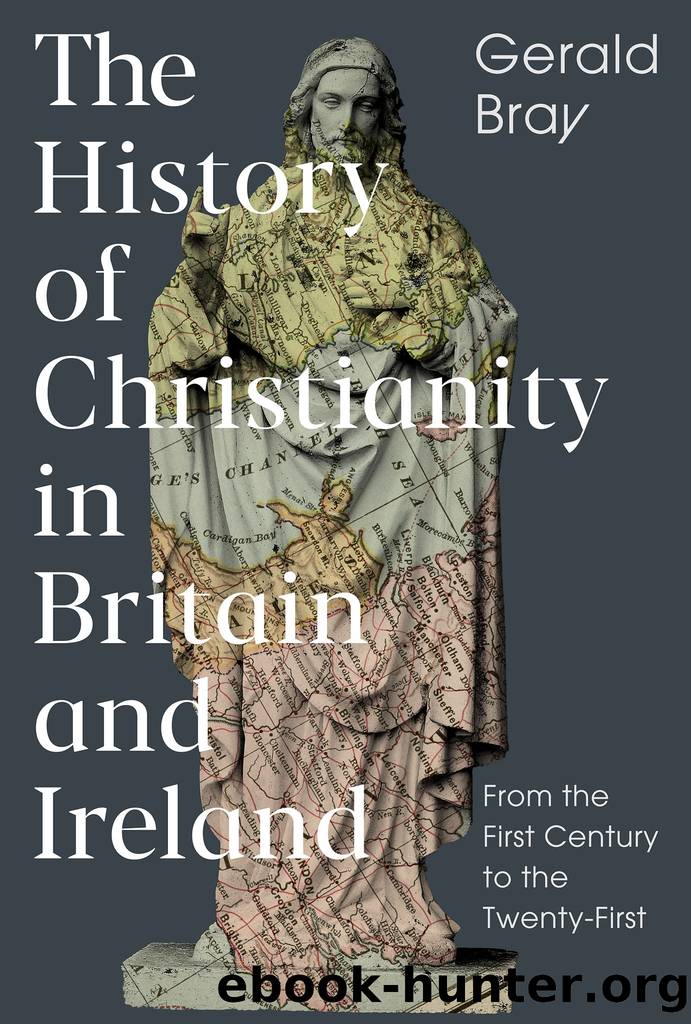The History of Christianity in Britain and Ireland: From the First Century to the Twenty-First by Gerald Bray

Author:Gerald Bray [Bray, Gerald]
Language: eng
Format: epub
Tags: Religion, Christian Church, history
ISBN: 9781789741186
Google: zVQwEAAAQBAJ
Publisher: Inter-Varsity Press
Published: 2021-06-17T23:27:29.950110+00:00
The Great Schism
Oliver Cromwell died on 3 September 1658 and before long the Commonwealth of which he had been Lord Protector started to unravel. Cromwellâs son, Richard, succeeded him but was unequal to the task, and within a year he was gone. The Rump Parliament, to the extent that it still existed, was recalled, but it was soon dissolved by the army. In its place the full Long Parliament of 1640 was restored and met from 21 February to 16 March 1660, when it dissolved itself. In that short period it revived the presbyterian system of church government and made the Westminster Confession the official doctrine of the state. For a while it looked as though a moderate form of presbyterianism would prevail and those who advocated it took pains to reach out to others as far as they could. In particular they wanted to heal the breach with the Independents by allowing greater freedom to individual congregations than strict presbyterianism would have countenanced, but feelings between the two groups were inflamed and they had limited success. The moderates approached Charles II in exile, hoping that he would support them, and to some extent he did, although he made it clear that he would expect a restoration of both the Prayer Book and the episcopate.7 It soon became apparent that the best that could be hoped for was a âreducedâ form of episcopacy, similar to that advocated by the late Archbishop Ussher. Parish ministers would have considerable freedom in matters of worship, dress and (crucially) discipline, retaining the right to excommunicate parishioners who in their view were unworthy to partake of the sacrament.
A settlement of that kind seemed possible for about six months after the restoration of the king on 29 May 1660, but there was trouble ahead. The presbyterians fell out with one another over the degree of latitude they were prepared to tolerate, and they failed to present a united front in the negotiations that began in 1661. By then it was also clear that there was a vocal group of Puritans who would not accept any compromise, and who rejected the kind of quality control of the ministry that was implicit in a presbyterian system. On the other side, the pre-Civil-War clergy and bishops who had remained loyal to the king returned to claim what they believed was rightfully theirs, and they were determined not to grant any serious concessions to the presbyterians. Matters were complicated still further by the existence of a small group of Catholics at court who wanted toleration for themselves and their co-religionists. There was some sympathy for them in circles close to the king, but the majority of both presbyterians and episcopalians were united against them. The idea that religious toleration might extend to Catholics â who, it must be remembered, would not have given it to others if they had been in power â was anathema, and fear that it might be granted to them played into the hands of those who wanted to restore the old order.
Download
This site does not store any files on its server. We only index and link to content provided by other sites. Please contact the content providers to delete copyright contents if any and email us, we'll remove relevant links or contents immediately.
Machine Learning at Scale with H2O by Gregory Keys | David Whiting(4188)
Never by Ken Follett(3795)
Fairy Tale by Stephen King(3220)
The Man Who Died Twice by Richard Osman(2997)
Reminders of Him: A Novel by Colleen Hoover(2952)
Will by Will Smith(2794)
Rationality by Steven Pinker(2291)
Can't Hurt Me: Master Your Mind and Defy the Odds - Clean Edition by David Goggins(2229)
It Starts With Us (It Ends with Us #2) by Colleen Hoover(2201)
Friends, Lovers, and the Big Terrible Thing by Matthew Perry(2120)
The Becoming by Nora Roberts(2088)
The Stranger in the Lifeboat by Mitch Albom(2050)
Love on the Brain by Ali Hazelwood(1965)
New Morning Mercies: A Daily Gospel Devotional by Paul David Tripp(1877)
HBR's 10 Must Reads 2022 by Harvard Business Review(1778)
The Strength In Our Scars by Bianca Sparacino(1777)
A Short History of War by Jeremy Black(1763)
Never Finished: Unshackle Your Mind and Win the War Within by David Goggins(1643)
515945210 by Unknown(1600)
